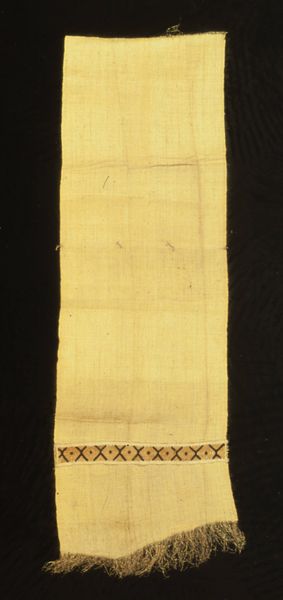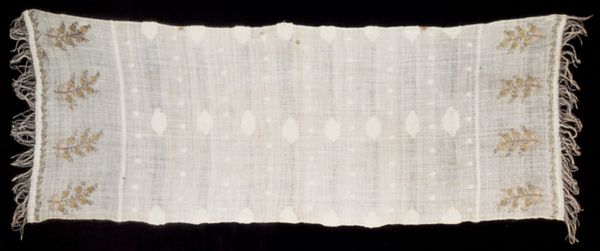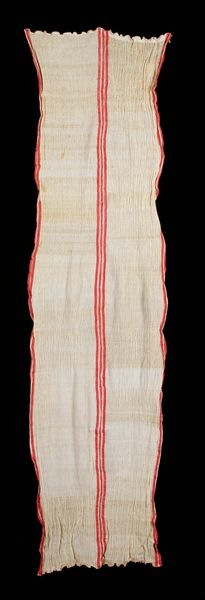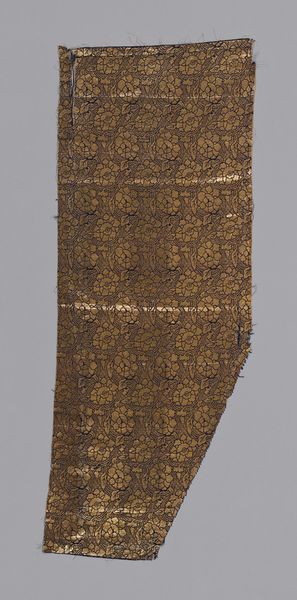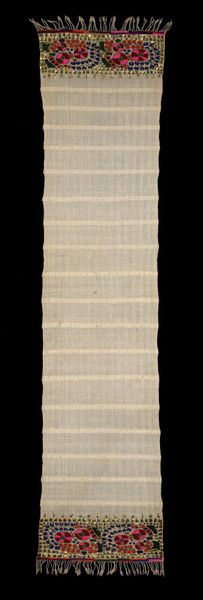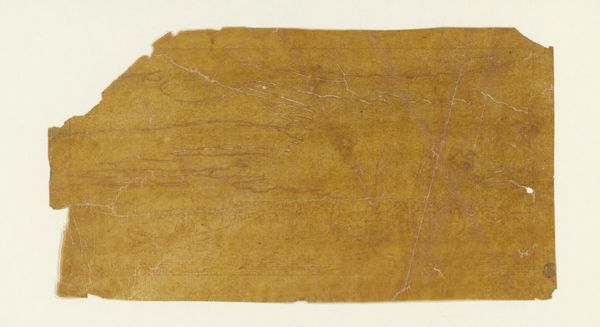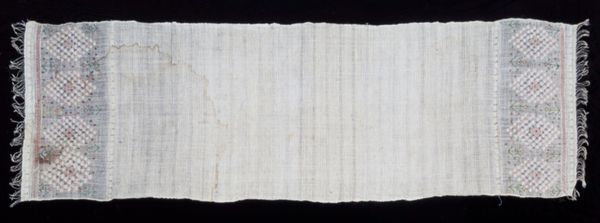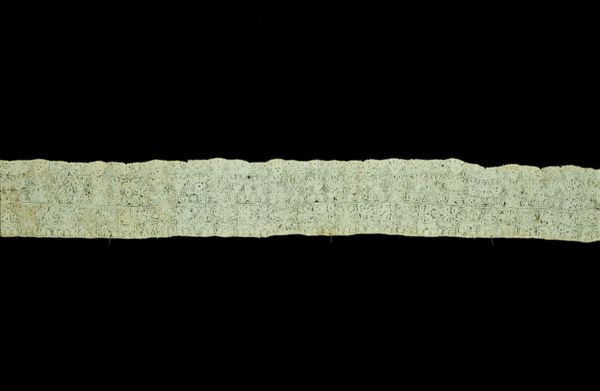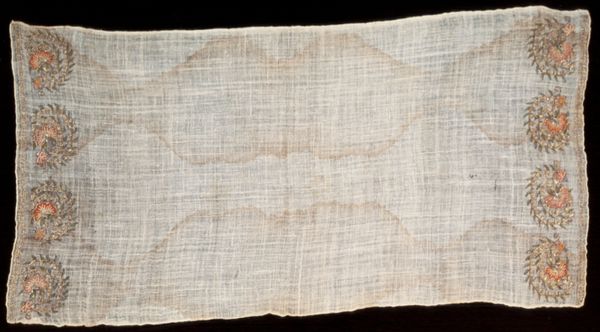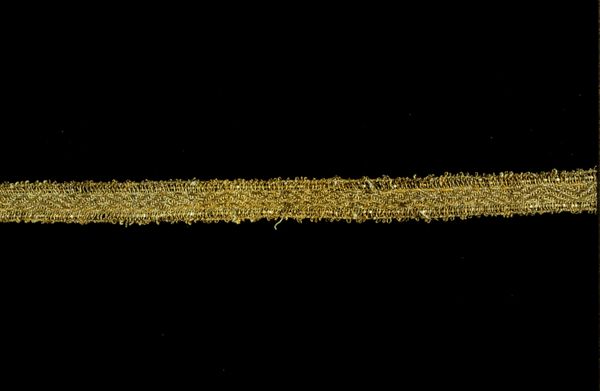
paper
paper
line
Dimensions: 33 x 3 5/8 in. (83.82 x 9.21 cm) (linen backing)29 1/8 x 1 15/16 in. (73.98 x 4.92 cm) (paper pattern with lace)
Copyright: Public Domain
Editor: Here we have "Lacework in progress" from around the 18th century, by an anonymous artist. It’s a drawing on paper depicting what looks like an unfinished piece of lace or woven fabric. The linear quality is immediately striking, almost like architectural blueprint for fabric. What stands out to you when you look at this? Curator: This piece whispers of hidden languages, the intricate encoding of status and identity. Lacework wasn’t just decoration; it was a visual declaration of wealth and social standing. Look at the geometric precision. Do you see how each shape is meticulously rendered, hinting at the time and skill required to produce the final textile? Editor: I do, especially around what looks like the edges of the design; that's interesting. I guess I never thought about how much planning must go into this kind of detailed work. It’s almost like a map, or an early form of digital design, where one tiny mistake could throw off the entire pattern. Curator: Precisely. Think of the pattern as a symbolic vocabulary. Certain motifs—flowers, vines, heraldic symbols—carried specific meanings within their culture. We are not only seeing lacework, but we glimpse the cultural memory embedded within these repeating motifs, passed down through generations of artisans. Can you imagine the social circles this textile was meant for? Editor: I see what you mean. It goes way beyond decoration. It tells a story about trade, craftsmanship, even family history maybe? That's a different perspective for me! Curator: The image acts as a mnemonic device. We recognize not only geometric forms, but hints to understanding broader, hidden messages in plain sight. Editor: Thanks. That really shifted my perspective. It’s amazing how something that seems so simple can reveal so much about the past. Curator: Indeed, and now we can also understand that even geometric objects and lines may have their own symbolism too.
Comments
No comments
Be the first to comment and join the conversation on the ultimate creative platform.
